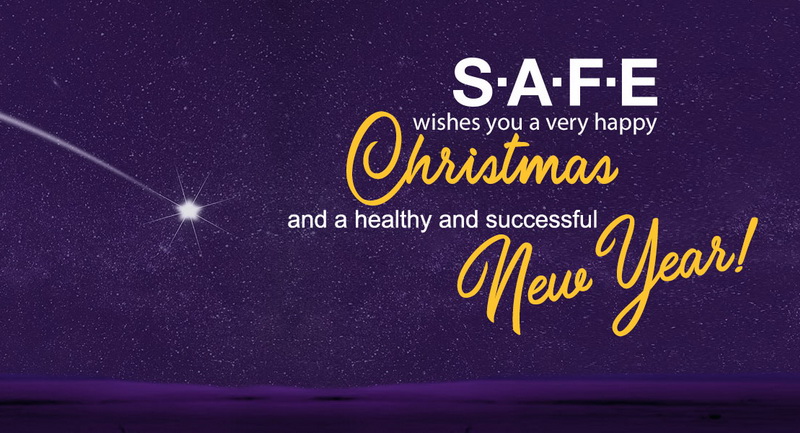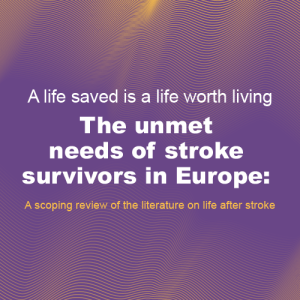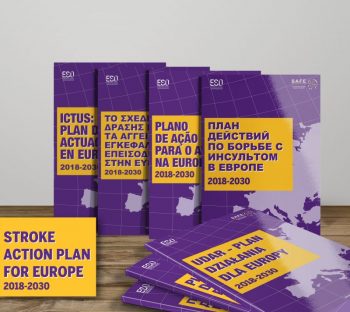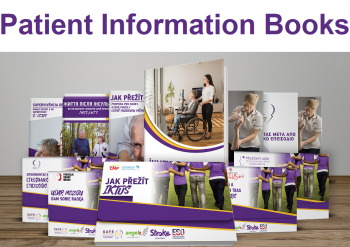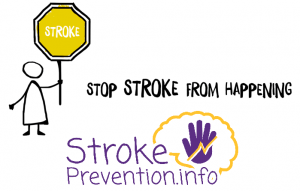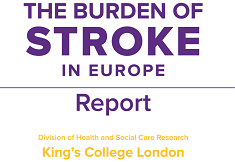
Jan 11, 2019
Article written by Francesca Fedeli, Founder of Fightthestroke.org, advocating for young stroke and CP survivors
Fightthestroke has been selected among 65 practices and 11 policies from around the world that help persons with disabilities on the Zero Project Award 2019, celebrating this year the topic of Independent Living and Political Participation. Project Mirrorable indeed has been awarded as a unique platform that improves the Motor Function in Young People with Cerebral Palsy.
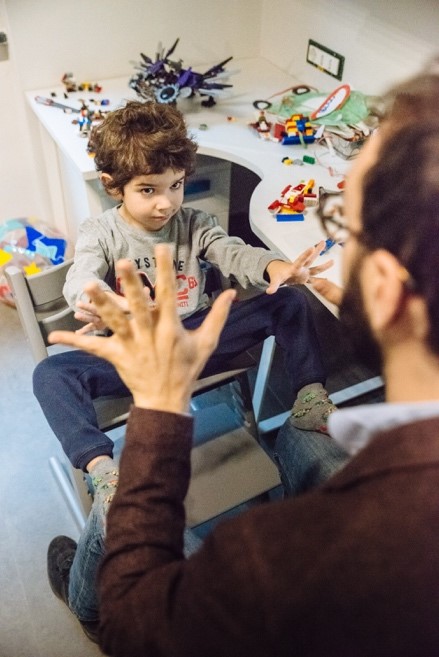 Fightthestroke, an Italian social enterprise founded in 2014, has developed an online platform called ‘Mirrorable’ to support rehabilitation of young stroke survivors. Mirrorable is a home-based therapy programme based on Action Observation Treatment, which states that by observing and imitating the actions of others we trigger specific neurons (‘mirror neurons’) in our own brain. Young stroke survivors are paired through AI and via a video platform and undertake tasks together to improve motor skills. A clinical trial on children with unilateral cerebral palsy has demonstrated an improvement in hand motor function compared to traditional rehabilitation, along with high levels of adherence and engagement.
Fightthestroke, an Italian social enterprise founded in 2014, has developed an online platform called ‘Mirrorable’ to support rehabilitation of young stroke survivors. Mirrorable is a home-based therapy programme based on Action Observation Treatment, which states that by observing and imitating the actions of others we trigger specific neurons (‘mirror neurons’) in our own brain. Young stroke survivors are paired through AI and via a video platform and undertake tasks together to improve motor skills. A clinical trial on children with unilateral cerebral palsy has demonstrated an improvement in hand motor function compared to traditional rehabilitation, along with high levels of adherence and engagement.
“MaVi discovered herself for the first time, when practicing with Mirrorable in front of the TV screen. The project for me was “moving”, it touches the heart and, if there is a mirror heart, it touches it too!”
– Valentina, mother of MaVi, who took part in the Mirrorable pilot
Problems Targeted
There are few effective and accessible evidence-based solutions to help rehabilitate motor skills in the estimated 17 million children with cerebral palsy worldwide.
Solution, Innovation, and Impact
The Mirrorable platform uses the scenario of learning to become a magician to encourage young stroke survivors to practice motor skills every day for a month. Children in the Mirrorable’s clinical trial received a toolkit with a computer, a 3D camera, and selection of booklets and magic tricks. They used these to imitate the magician in videos on a cloud-based platform. They were also matched with peers via video link to practice together and learn from each other. The IT-platform uses an algorithm to ensure the best possible match in terms of motor skills, cognitive abilities, etc. to support reciprocal teaching and rehabilitation. The gaming approach of Mirrorable increases the appeal for children and encourages them to practice. In the market version, the 3D camera has been replaced by artificial intelligence technology which tracks and records the child’s movements and emotions so that progress can be measured by the child, family members, and health professionals. Results of a clinical trial, presented in 2018, showed a 26 per cent improvement in motor function, increased family engagement, and 100 per cent adherence to the daily exercises.
Funding, Outlook, and Transferability
Support developing Mirrorable and the clinical trial came from corporate fundraising, grants and private donors, but the project was especially driven by the Fightthestroke co-founders Francesca Fedeli and Roberto D’Angelo who experienced themselves a young stroke survivor in their family. Following the trial Mirrorable is now developing a business model to bring the product to a wider market, while keeping prices as low as possible for families of young stroke survivors.
Mirrorable’s cloud-based technology makes easily transferable, and the operating system is already available in Italian, Spanish and English. Fightthestroke is exploring whether the programme might be appropriate for other target groups, such as adult stroke survivors or people with Parkinson’s disease. Fightthestroke has also developed an offline programme to complement Mirrorable’s online platform, and held its first intensive Mirrorable sports camp, including Habit and AOT treatments, for children with unilateral cerebral palsy in August 2018.
About the Practice at a Glance
NAME OF INNOVATIVE PRACTICE: Mirrorable
ORGANIZATION: Fightthestroke
COUNTRY OF IMPLEMENTATION: Italy
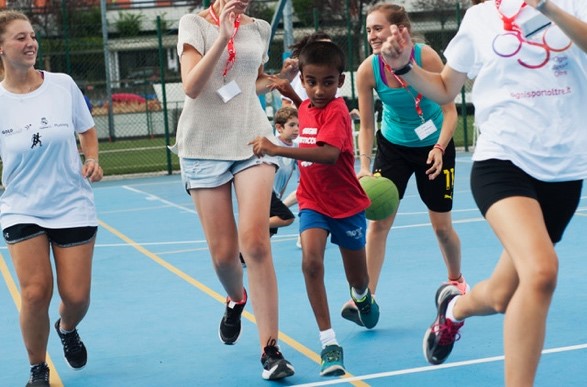 Facts and Figures
Facts and Figures
– A recent clinical trial demonstrated that Mirrorable online users realized a 26 per cent improvement in motor function.
– The Mirrorable model costs approximately half as much as conventional therapy.
– The Mirrorable ecosystem can be easily replicable for other target groups, as adults who suffered a brain stroke.
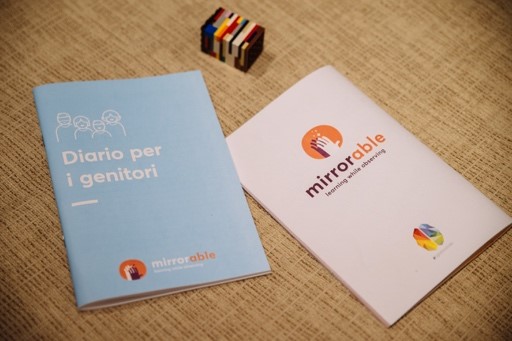 Contact
Contact
Francesca Fedeli
francesca@fightthestroke.org
Fightthestroke Website
Links and Further Reading:
Mirrorable website
Mirrorable founders’ Ted Talk (video)
Mirrorable demo video

Jan 4, 2019
First published on ScienceDaily.com
In a medical records analysis of information gathered on more than 6,000 people, Johns Hopkins Medicine researchers conclude that simply asking older adult patients about their weight history at ages 20 and 40 could provide real value to clinicians in their efforts to predict patients’ future risk of heart failure, heart attacks or strokes.
In a report published Nov. 14 in the Journal of the American Heart Association, the investigators say the younger-weight question is potentially a cost-efficient, high-value “ask” likely to help physicians decide how to advise and treat their older patients, particularly now that many people change primary care physicians throughout their lives, and lifelong health records may not transfer. Asking this simple question about prior lifetime weights provided prognostic information about a person’s heart failure risk that was incremental to their measured weights at older ages and other measured traditional heart disease risk factors.
“We’ve known that the longer a person is obese, the more it becomes problematic by increasing their heart failure risk,” says Erin Michos, M.D., M.H.S., associate professor of medicine at the Johns Hopkins University School of Medicine. “That is why measuring a person’s weight at older ages may not tell the whole story about their risk. There’s now more evidence that newly obese people are in overall less danger. Our findings emphasize the importance of lifelong maintenance of a healthy weight, as greater cumulative weight from young adulthood is more risky to heart health.”
“We already routinely measure weights during a patient’s clinic visit to make health recommendations, but we think adding this low-tech question about their prior weight histories can further help direct clinical care,” she adds. “While we acknowledge that self-reported weight history is imperfect, at the very least, asking the question sparks patient reflection and self-motivation to get back to healthier weights from their younger ages.”
Heart attacks, strokes and other cardiovascular diseases remain the No. 1 killers of Americans. Heart failure, also known as congestive heart failure, is a condition marked by a gradual weakening and stiffening of the heart muscle, diminishing its ability to pump blood. Physicians routinely attempt to assess risks for heart disease and heart failure as patients age with measures of blood pressure, cholesterol, exercise levels, family history, diet and weight, Michos noted. Although a single weight measurement in an older adult is helpful, she says, weight history is even more informative, and the new study was in part designed to identify a practical way of getting it that would be considered informative enough to add to clinical care.
For the study, the researchers used data already gathered on 6,437 participants in the Multi-Ethnic Study of Atherosclerosis (MESA) recruited between 2000 and 2002 who were age 45 to 84 at time of enrollment into the study. Participants were followed an average of 13 years, and lived in six U.S. communities: Baltimore, Maryland; Chicago, Illinois; Forsyth County, North Carolina; New York City, New York; Los Angeles County, California; and St. Paul, Minnesota. On average, they were 62 years old at the study’s start. Almost 53 percent of the participants were women. About 39 percent of participants were white, more than 26 percent were African-American, 22 percent were Hispanic and a little more than 12 percent were Chinese-American.
Each participant filled out a survey that reported their weight history at age 20 and 40. Their weights were further tracked during the study period using measurements from a standardized scale over five different in-person visits. All weights were converted to body mass indexes (BMI) by dividing the weight by the square of height. A BMI less than 25 kilograms per meter squared was considered normal, while a BMI between 25 and 30 was considered overweight, and 30 and above was considered obese.
By the end of all participants’ last visit, 290 people had experienced heart failure, and 828 experienced cardiovascular disease events such as heart attacks, stroke and or death as determined by participant and family interviews and patient medical records.
As expected, Michos says, the standard measured weights taken at clinic visits during the 13-year study period were associated with later heart failure risk, with a 34 percent increased likelihood of heart failure for every 5 kilograms per meters squared increase in BMI, after accounting for other established heart disease risk factors such as age, smoking, physical activity, blood pressure and diabetes. But then her team found that even after taking into account these current measured weights at older ages, that having a self-reported history of obesity at age 20 (144 participants) was associated with a more than threefold risk of heart failure, and having a history of being obese at age 40 (716 participants) doubled the risk compared with people who had a BMI in the normal range at those ages.
“Our study confirms that maintaining a normal weight over the lifespan is the most ideal, and that when and for how long a person becomes obese are highly informative in assessing heart disease risk in older adults,” says Michos.
Michos cautioned that the new study was designed to look at associations between self-reported lifetime weights and heart disease risk over time, and not determine cause and effect or attempt to determine the accuracy of patients’ recall of their weight at young ages. Patient self-reporting can result in bias or imperfect memory, but the researchers believe most older adults have reasonably accurate recall of their younger adult weight. Their study findings suggest that even with these known limitations of weight recall, that simply asking about weight history was helpful in risk assessment. Right now, clinicians just don’t routinely ask about a person’s weights at key life points such as young- and mid-adulthood, Michos says, but it is so easy to do.
Michos says that we need to investigate how we can incorporate this ask (about lifetime weight recall) into electronic health records and into clinical practice.
About 1 in 3 deaths in the U.S. are due to heart disease, according to the American Heart Association. About 92 million American adults are living with some form of cardiovascular disease. About 5.7 million people in the U.S. live with heart failure, and more than half a million are diagnosed each year. More than half of people with heart failure will die within five years of diagnosis, according to the Centers for Disease Control and Prevention.
Story Source:
Johns Hopkins Medicine. “Your weight history may predict your heart failure risk: Low-tech reporting on earlier weights may guide clinical care.” ScienceDaily. ScienceDaily, 12 December 2018. <www.sciencedaily.com/releases/2018/12/181212093327.htm>.
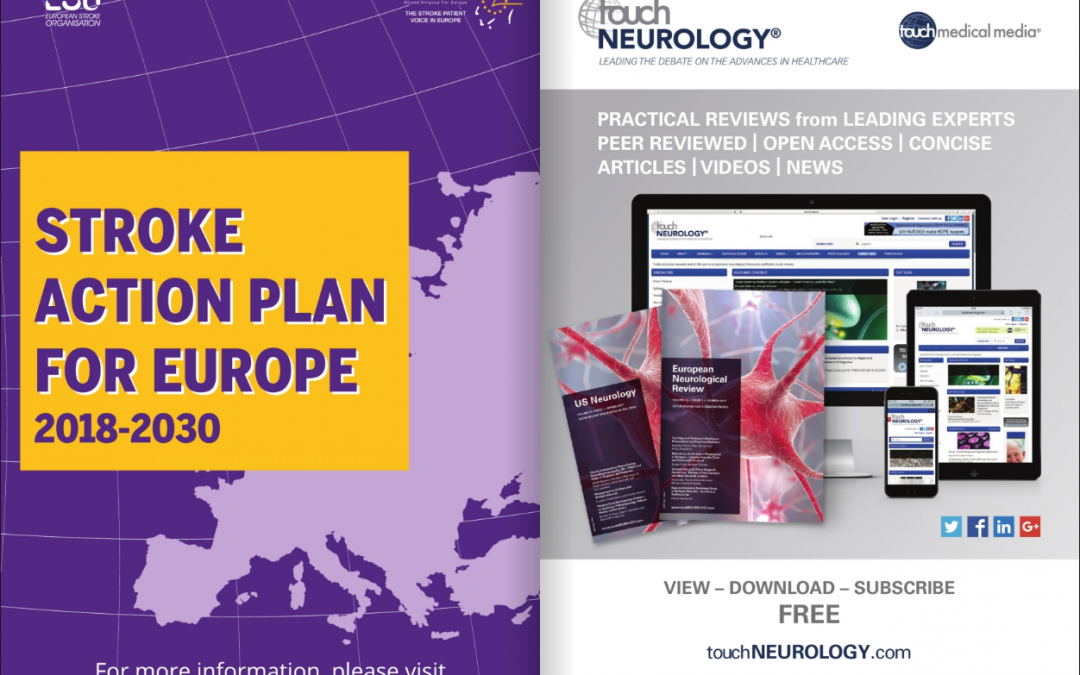
Dec 28, 2018
Another exciting issue of European Neurological Review is now released, highlighting new advances in the field of Neurology, as well as featuring SAFE’s information about the Stroke Action Plan for Europe.
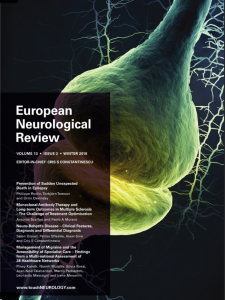 We find one of the case reports from this issue particularly interesting, covering a rare syndrome that can occur in persons with an ischaemic stroke.
We find one of the case reports from this issue particularly interesting, covering a rare syndrome that can occur in persons with an ischaemic stroke.
Charles Bonnet syndrome (CBS) is characterised by the presence of visual hallucinations (VH) and visual sensory deprivation in individuals with preserved cognitive status and without a history of psychiatric illness. CBS is a rare, underdiagnosed and under-recognised syndrome, which was first described in 1769 by Charles Bonnet, who observed this phenomenon in his grandfather.
The prevalence of CBS is not consistent between authors. Some studies have stated that 0.47% of the general population suffer from CBS – this number can increase to around 15–30% when referring to patients with visual impairment. The disparity in CBS prevalence can be explained by the absence of clear diagnostic criteria, the necessity of different specialties to recognise or exclude other disorders and the incapability of patients to express the symptoms.2,3 CBS usually occurs in elderly people with compromised visual function and can be a rare manifestation of an injured visual pathway. Secondary lesions to multiple sclerosis, ischaemic stroke, temporal arteritis and meningiomas can explain the syndrome. This case report presents a variant of CBS as consequence of an ischaemic stroke in left occipitotemporal regions. In our view, the particularities and variations of CBS should be widespread, as it can be the only manifestation of an ischaemic stroke that requires appropriate and immediate management.
You can read the full case report here and you can find more articles from the latest issue here.
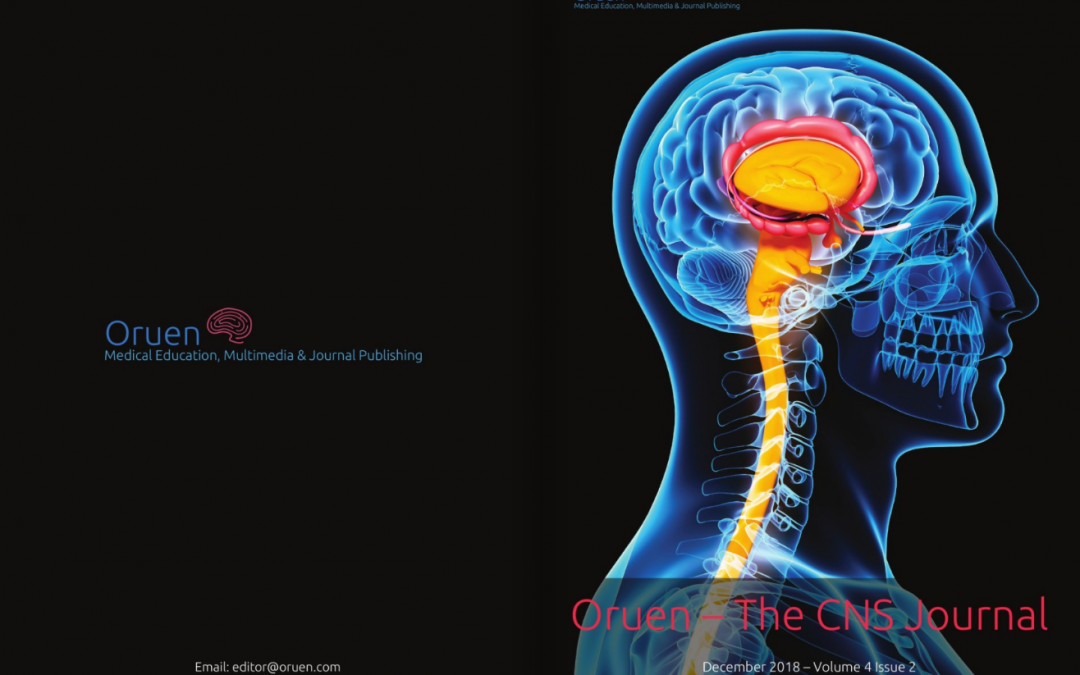
Dec 21, 2018
Oruen – The CNS Journal has now been published online. In this issue you can find the SAFE special report on stroke prevention project and Stroke Action Plan for Europe advert. SAFE is also mentioned in the two ANGELS articles.
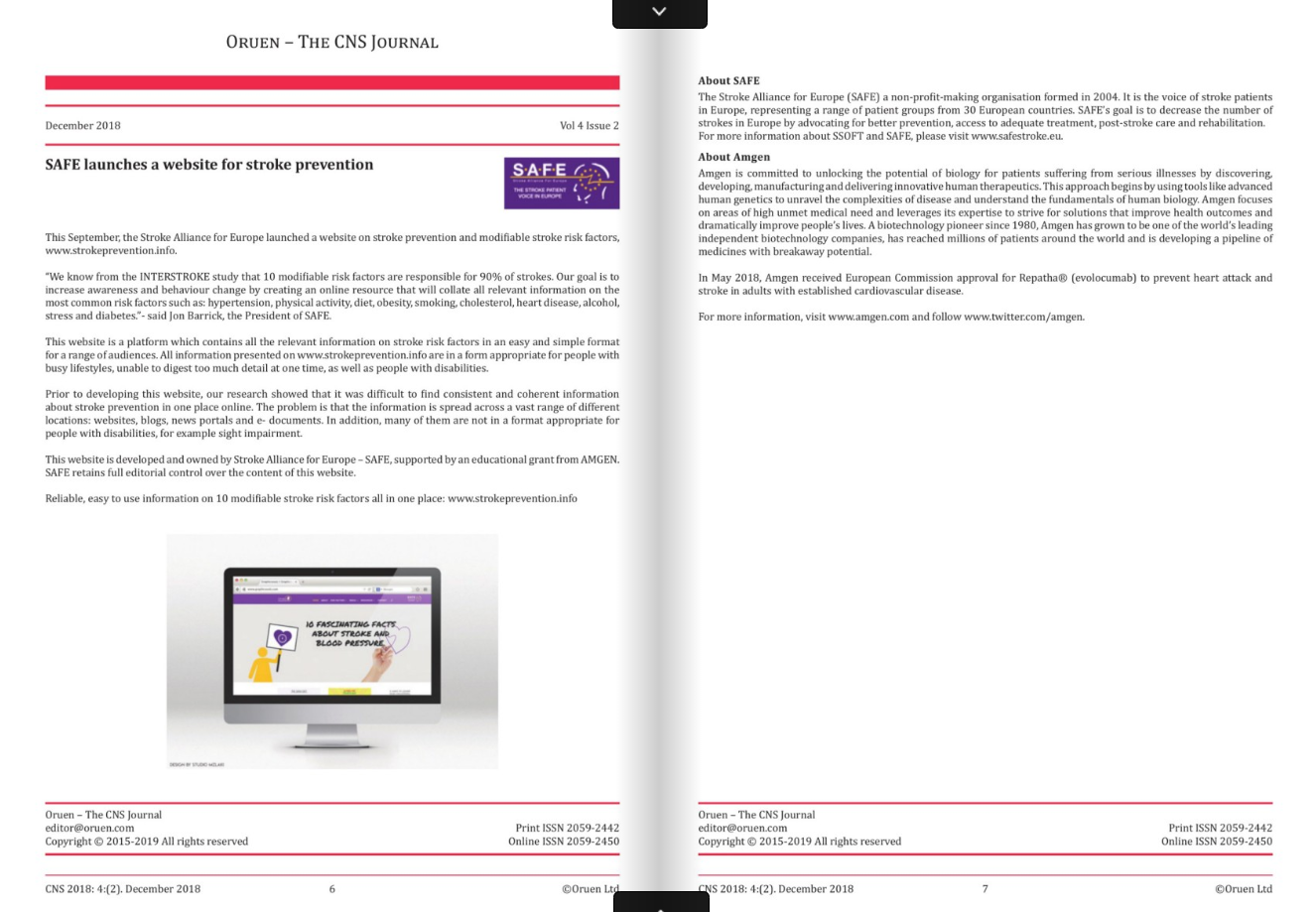
The current issue also brings you the following reviewed articles:
Clinical Outcomes and Work Flow Optimisation with Pipeline System and Shield Technology (Istvan Szikora, Saleh Lamin, Mohamed Aggour)
Innovations in Endovascular Treatment of Acute Ischemic Stroke and Cerebral Aneurysms (Hannes A. Deutschmann, Marc Ribo, Mathieu Sanchez)
The ANGELS Initiative: More and better Stroke-ready Hospitals across the globe (Rob Goodwin)
Improving stroke care across the world: The Angels Initiative (Valeria Caso, Magd Fouad Zakaria, Ales Tomek, Robert Mikulik, Sheila Cristina Ouriques Martins, Thang Huy Nguyen, Anastasia Rossouw)
Stroke Prevention in atrial Fibrillation: update with NOAC Treatment and the impact of Reversal (Dr. Allison Kirsop)
Transition of ADHD Patients from Childhood into Adulthood (Dr Allison Kirsop)
An Introduction to the Internal Capsule in Schizophrenia (Dr. Matthew Williams)
About Oruen – The CNS Journal
The journal is owned and published bi-annually by Oruen Limited; it is a peer-reviewed, open access publication, and has received CME accreditation from the European Accreditation Committee in CNS (EACIC) with a 100% focus on original CNS research topics, and the latest advances, diagnoses, and treatment of CNS disorders. Oruen – The CNS Journal is distributed in print and electronically to thousands of physicians, researchers, academics, nurses, and related healthcare professionals with an interest in CNS disorders. Both subscription and access are free and there are no contributory author fees for publication. Papers submitted for publication are accepted based on their originality, likely impact on and relevance to clinical practice, data quality, and overall potential interest to the journal’s readership.

 Fightthestroke, an Italian social enterprise founded in 2014, has developed an online platform called ‘Mirrorable’ to support rehabilitation of young stroke survivors. Mirrorable is a home-based therapy programme based on Action Observation Treatment, which states that by observing and imitating the actions of others we trigger specific neurons (‘mirror neurons’) in our own brain. Young stroke survivors are paired through AI and via a video platform and undertake tasks together to improve motor skills. A clinical trial on children with unilateral cerebral palsy has demonstrated an improvement in hand motor function compared to traditional rehabilitation, along with high levels of adherence and engagement.
Fightthestroke, an Italian social enterprise founded in 2014, has developed an online platform called ‘Mirrorable’ to support rehabilitation of young stroke survivors. Mirrorable is a home-based therapy programme based on Action Observation Treatment, which states that by observing and imitating the actions of others we trigger specific neurons (‘mirror neurons’) in our own brain. Young stroke survivors are paired through AI and via a video platform and undertake tasks together to improve motor skills. A clinical trial on children with unilateral cerebral palsy has demonstrated an improvement in hand motor function compared to traditional rehabilitation, along with high levels of adherence and engagement. Facts and Figures
Facts and Figures Contact
Contact


 We find one of the case reports from this issue particularly interesting, covering a rare syndrome that can occur in persons with an ischaemic stroke.
We find one of the case reports from this issue particularly interesting, covering a rare syndrome that can occur in persons with an ischaemic stroke.

